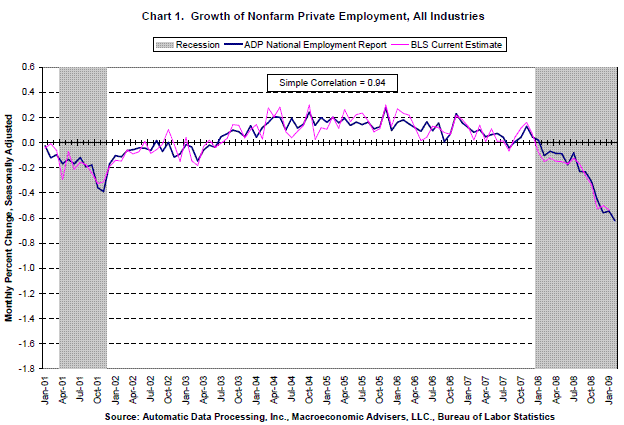MBS traders continue to meddle in credit impaired coupons while managing to methodically maneuver the waves created by the supply sensitive, FTQ weary yield curve. MBS traders remain at the ready to react to "equity optimistic" headline news that liquidates "flight to quality" positions on the yield curve. That would be quite convenient given the relatively expensive prices asked for fuller/higher yielding/credit impaired MBS coupons. (A sell off in TSY would aid in the necessary cheapening of MBS coupons). The question is and has been.... does the "up in coupon" trade have another round left?
That is what today's release is supposed to tell us. Will the Homeowner Affordability and Stability Plan be Effective???? Should MBS buyers seek the shelter of prepay protected MBS coupons? Will the MBS market move DOWN IN COUPON????
When it comes down to determining HOW EFFECTIVE THE HOMEOWNER AFFORDABILITY AND STABILITY PLAN WILL BE....we have put the issue through the ringer...
We have analyzed, examined, investigated, scrutinized, probed, evaluated, and explored the current status of government agency underwriting guidelines and loan fees. We have discussed the variety of barriers that underwater borrowers must rise above to qualify. We have argued the effects of logically formulated loan level price adjustments. We have even considered COMMON SENSE MANUAL UNDERWRITING.
Given the current state of the real estate/mortgage market the release of "the details" has the potential to be an MBS market "non-event" today. After more than one "ITSNBN" false alarm, MBS traders may require ACTUAL PROOF that would FORCE them out of their "up in coupon" positions. The MBS market wont be looking to head "down in coupon" at the same hurried pace it had when the plan was originally announced. MBS investors are actually quite willing to let the stack cheapen up a few ticks while TSYs find their post refunding range and prepayment perplexities are resolved.
Plain and Simple: The MBS market will need a swift slap in the face to snap out its stagnation at this point...
Remember. The expected timing of this entire "ITSNBN" process has been dependent on multiple determinants....the shape of the yield curve, the health of the secured lending market, lender capabilities, GSE balance sheets, borrower sentiment, MBS trade bias.....and so on and so on. To say the least the aligning of these stars has been a difficult operation to orchestrate. Currently these market participants are working in discord to set primary mortgage market rates....
MBS buyers are not moving "down in coupon" until they see proof that borrowers are "pulling the trigger".
Borrowers aren't budging until lenders pass along "hoarded" yield spread to loan officers.
Lenders aren't lending because they are too nervous about be overwhelmed by borrowers (which would upset MBS in the long run).
Basically someone is going to have to out on a limb here...or else WE CONTINUE TO WAIT
THERE IS the ongoing potential for POLITICAL HEADLINE NEWS. If the Obama Administration coordinated some mortgage market wide "aligning of the stars" then MBS market participants would be forced to move "down in coupon" at a rapid pace. That is all pie in the sky though.
Details from the White House are expected any time now...the optimist in me is hopeful for some regulatory reform and guideline relaxation. The realist in me knows that is asking for too much at once...

MORTGAGE APPLICATIONS DECREASE 12.6%
For the week ending February 27, 2009 the Market Composite Index, a measure of mortgage loan application volume, was 649.7, a decrease of 12.6 percent. Remember last week was a shortened due to the Presidents' Day holiday. The four week moving average for the seasonally adjusted Market Index is down 4.8 percent to 717.3
The Refinance Index decreased 15.3 percent to 3063.4 from 3618.0
The Purchase Index decreased 5.6 percent to 236.4 from 250.5 one week earlier. The four week moving average for the Refinance Index is down 5.7 percent to 3469.2
The Conventional Purchase Index decreased 6.5 percent while the Government Purchase Index (largely FHA) decreased 3.9 percent. The four week moving average for the Purchase Index is down 2.5 percent to 245.0, which is the lowest level since April 1998.
The refinance share of mortgage activity decreased to 66.9 percent of total applications from 69.7 percent the previous week. The adjustable-rate mortgage (ARM) share of activity increased to 2.3 percent from 1.9 percent of total applications from the previous week.
The average contract interest rate for 30-year fixed-rate mortgages increased to 5.14 percent from 5.07 percent, with points decreasing to 1.05 from 1.25 (including the origination fee) for 80 percent loan-to-value (LTV) ratio loans.
The average contract interest rate for 15-year fixed-rate mortgages increased to 4.73 percent from 4.71 percent, with points increasing to 1.13 from 1.12 (including the origination fee) for 80 percent LTV loans.
The average contract interest rate for one-year ARMs was unchanged at 6.13 percent, with points decreasing to 0.18 from 0.21 (including the origination fee) for 80 percent LTV loans.

According to the ADP National Employment Report Nonfarm private employment decreased 697,000 from January 2009 to February. The estimated change of employment from December 2008 to January 2009 was revised down by 92,000, from a decline of 522,000 to a decline of 614,000.

February's ADP Report estimates nonfarm private employment in the service-providing sector fell by 359,000.
Employment in the goods-producing sector declined 338,000, the twenty-sixth consecutive monthly decline.
Employment in the manufacturing sector declined 219,000, its thirty-sixth consecutive decline.
Large businesses, defined as those with 500 or more workers, saw employment decline 121,000
Medium-size businesses with between 50 and 499 workers declined 314,000.
Small-size businesses, defined as those with fewer than 50 workers, declined 262,000.
In February, construction employment dropped 114,000. This was its twenty-fifth consecutive monthly decline, and brings the total decline in construction jobs since the peak in January 2007
Sharply falling employment at medium- and small-size businesses clearly indicates that the recession is spreading aggressively beyond manufacturing and housing-related activities.






